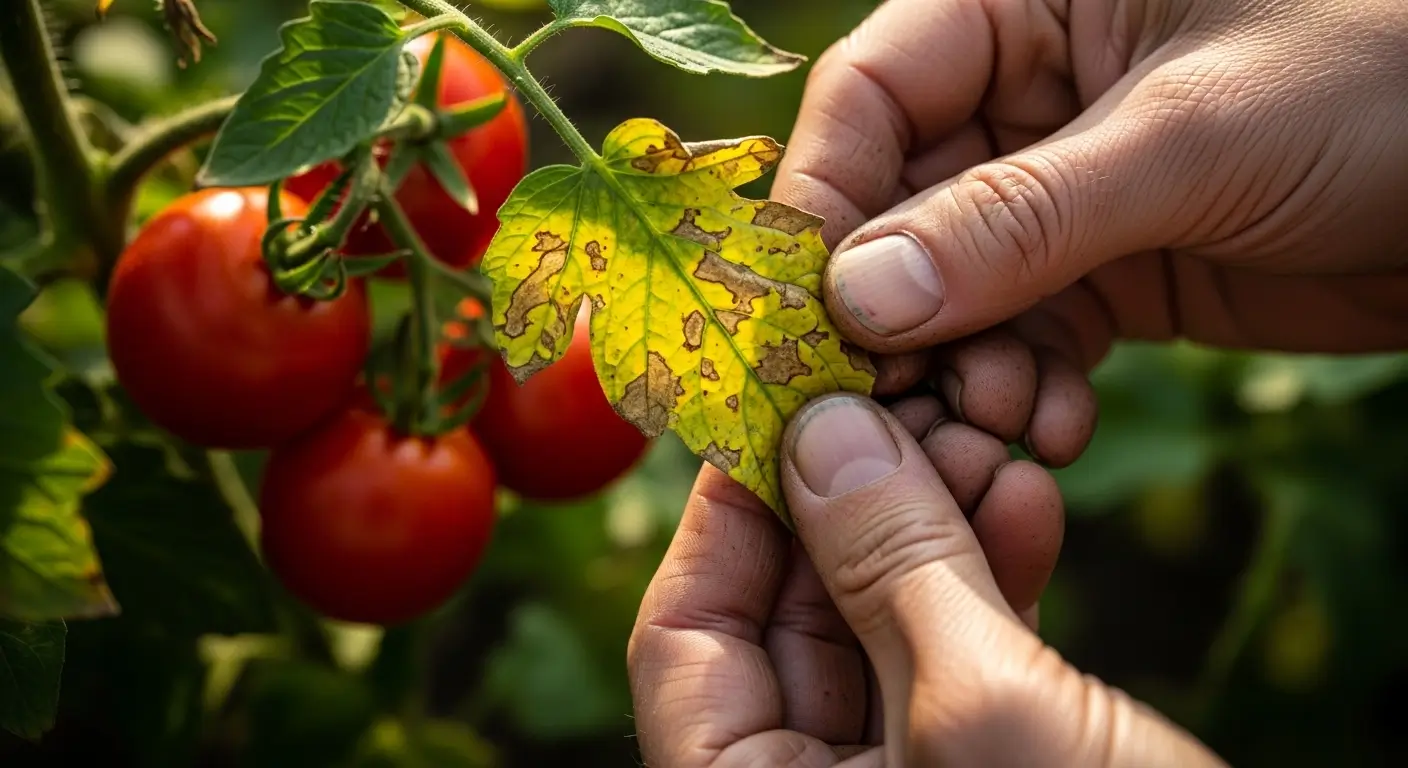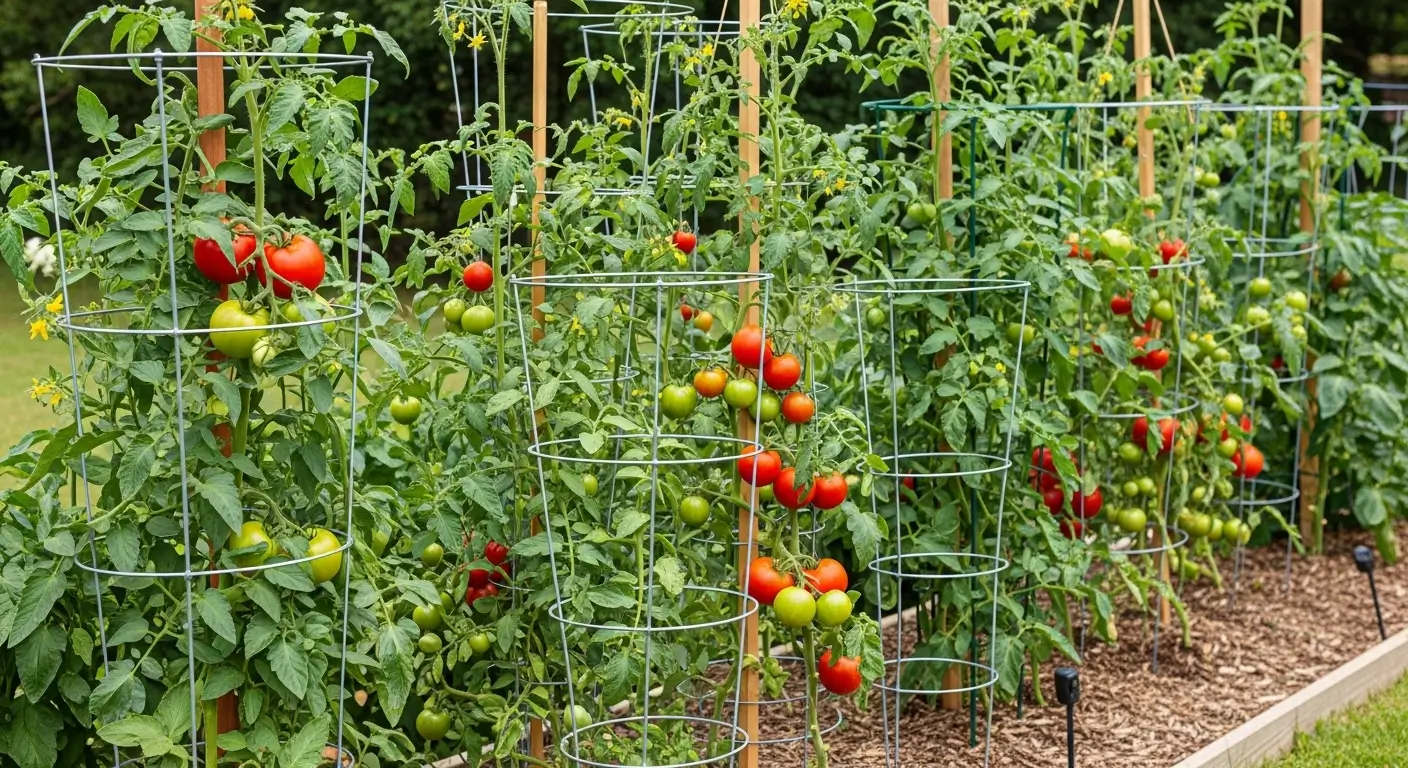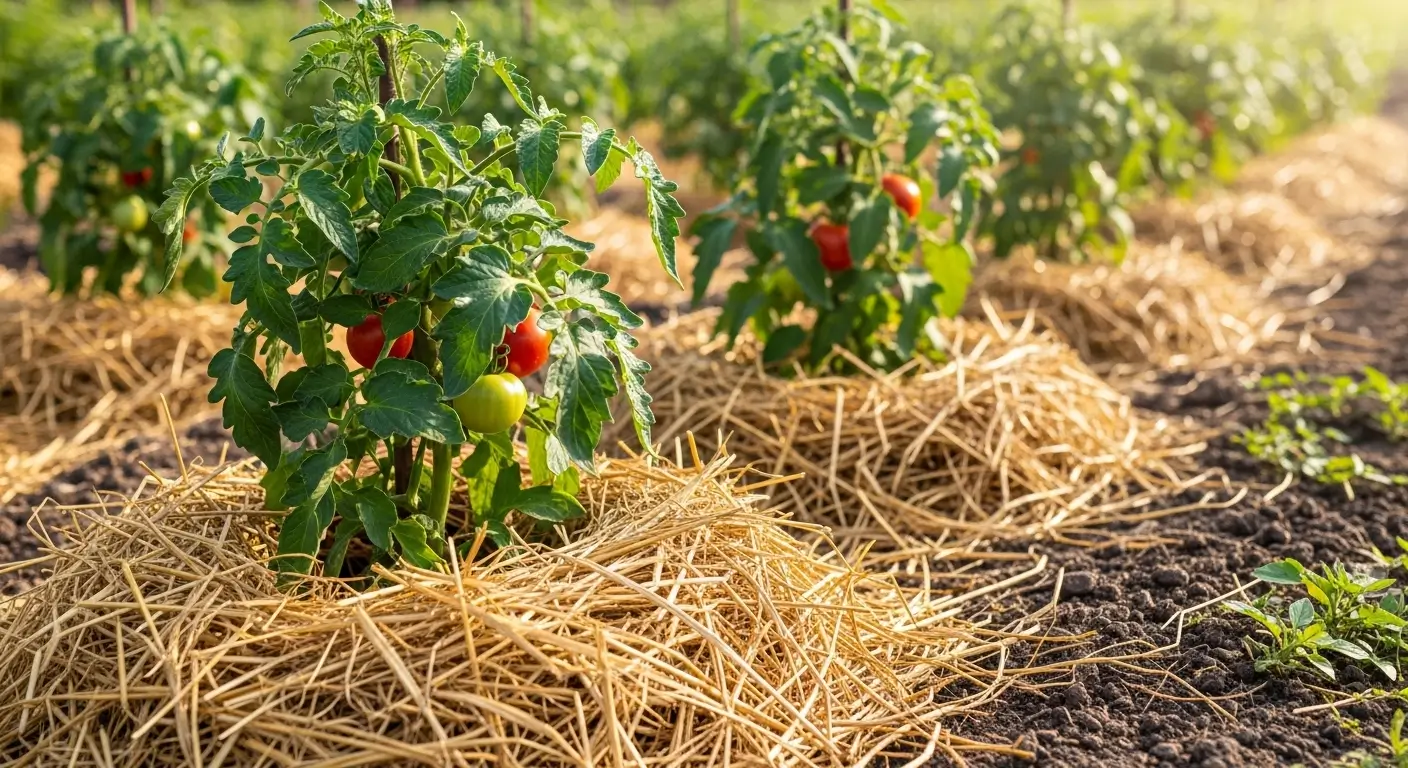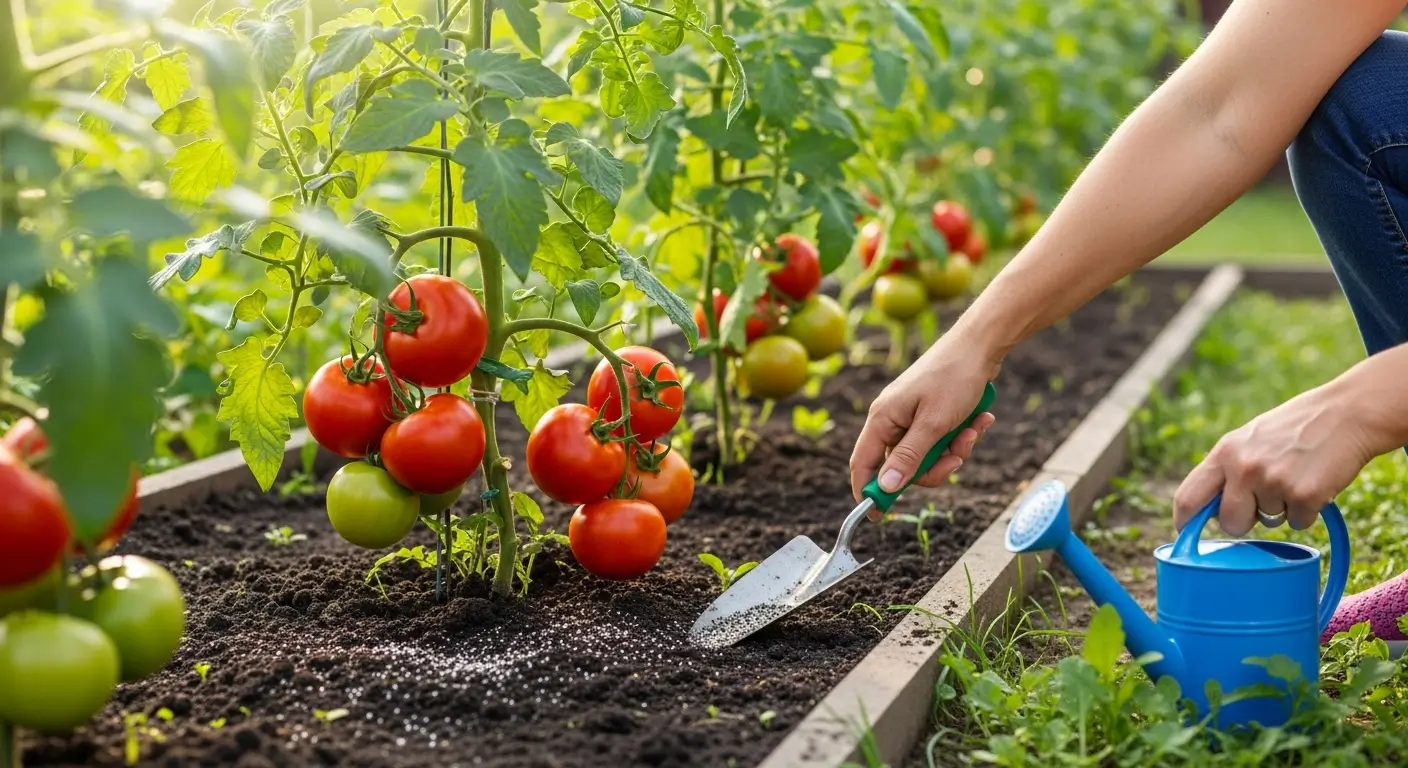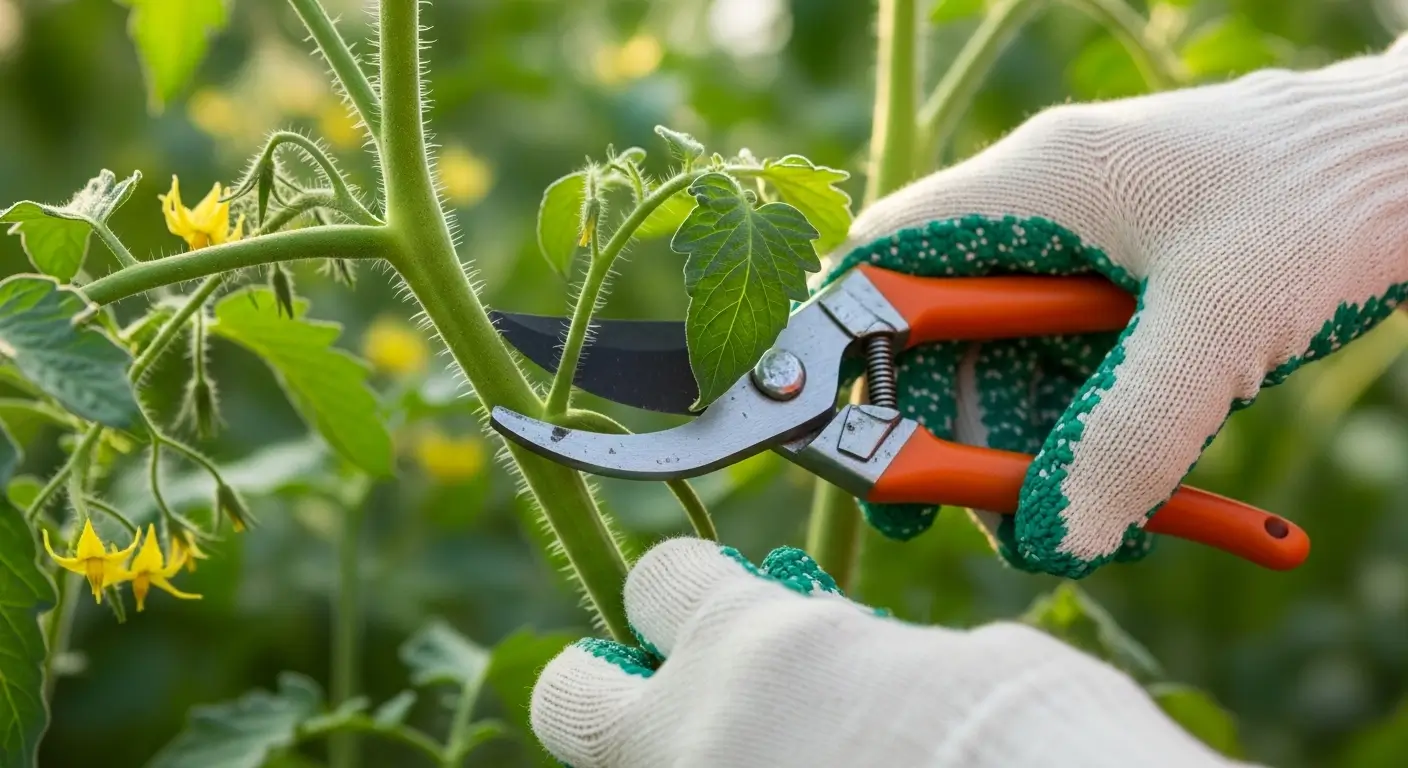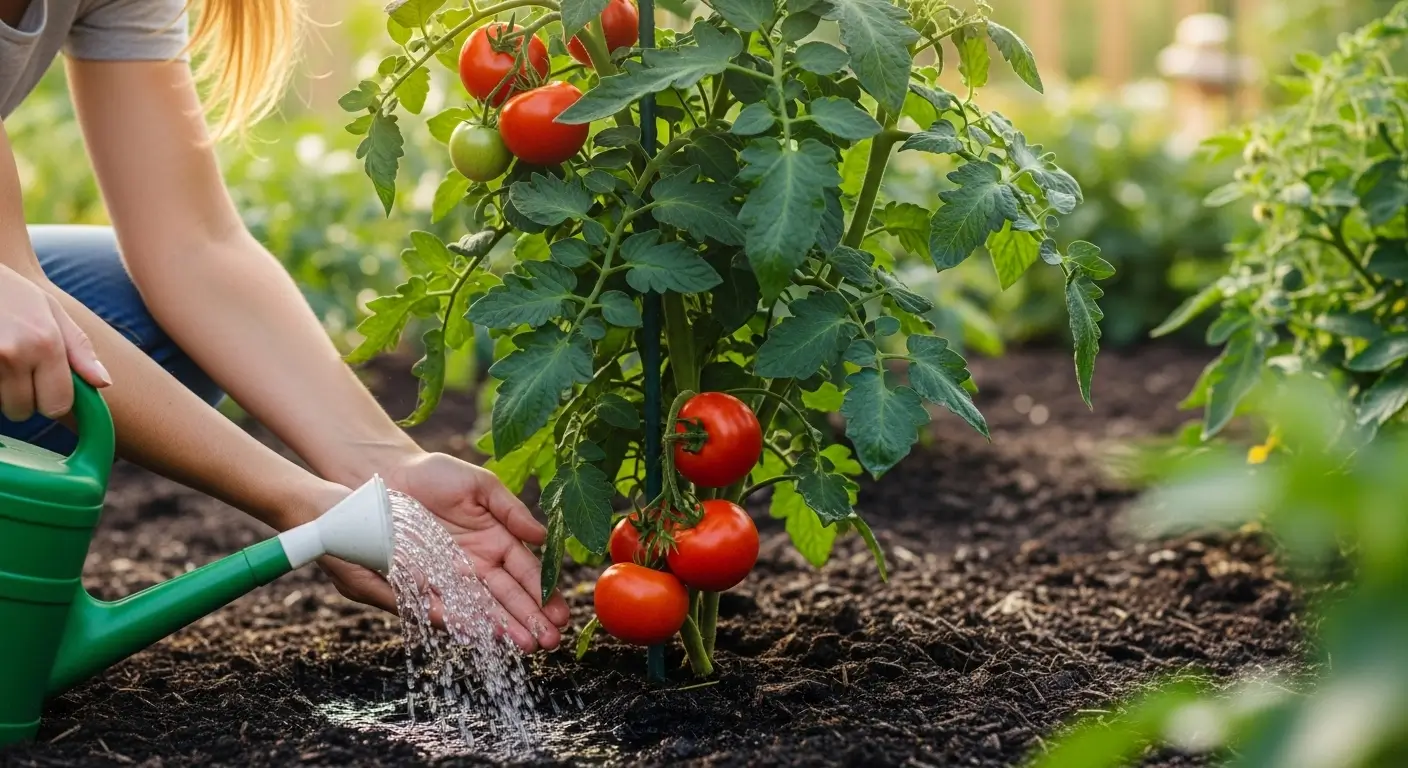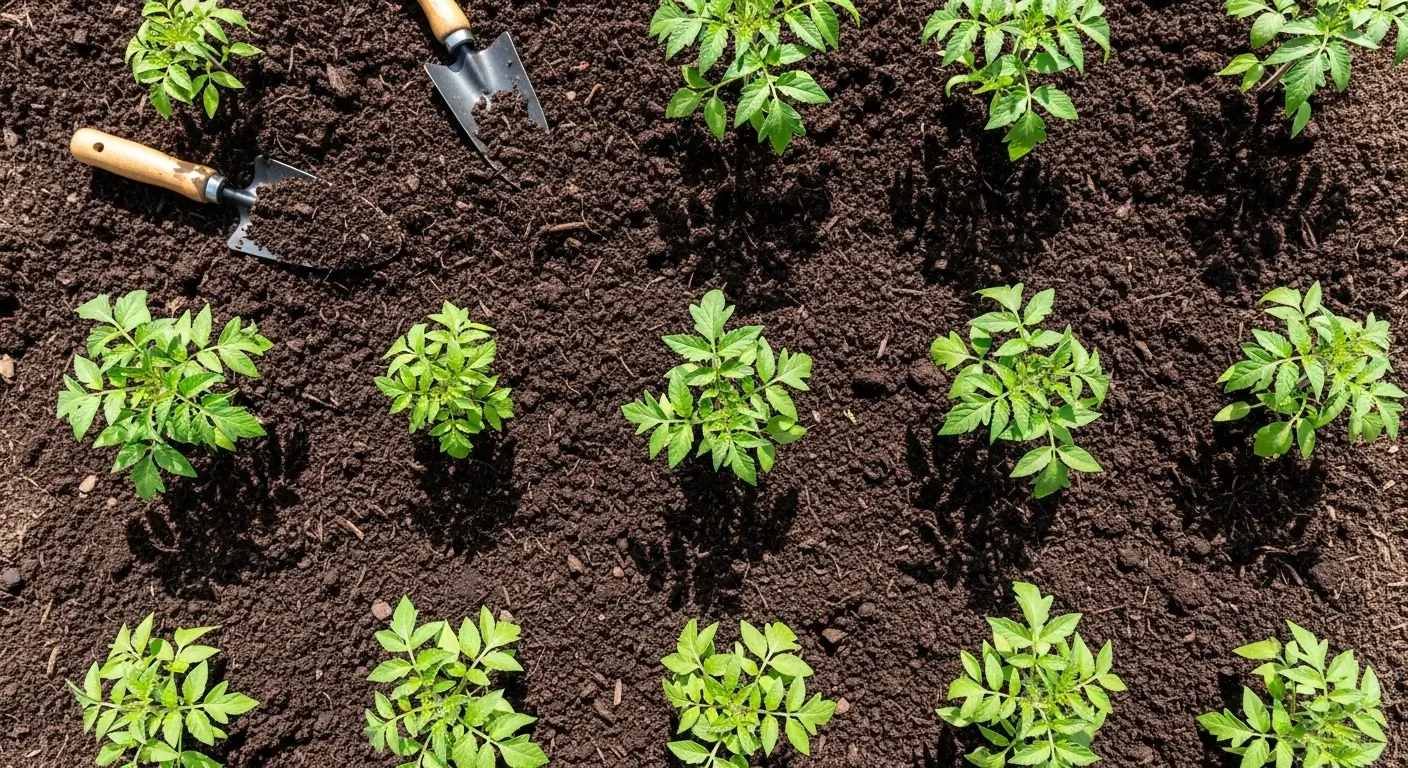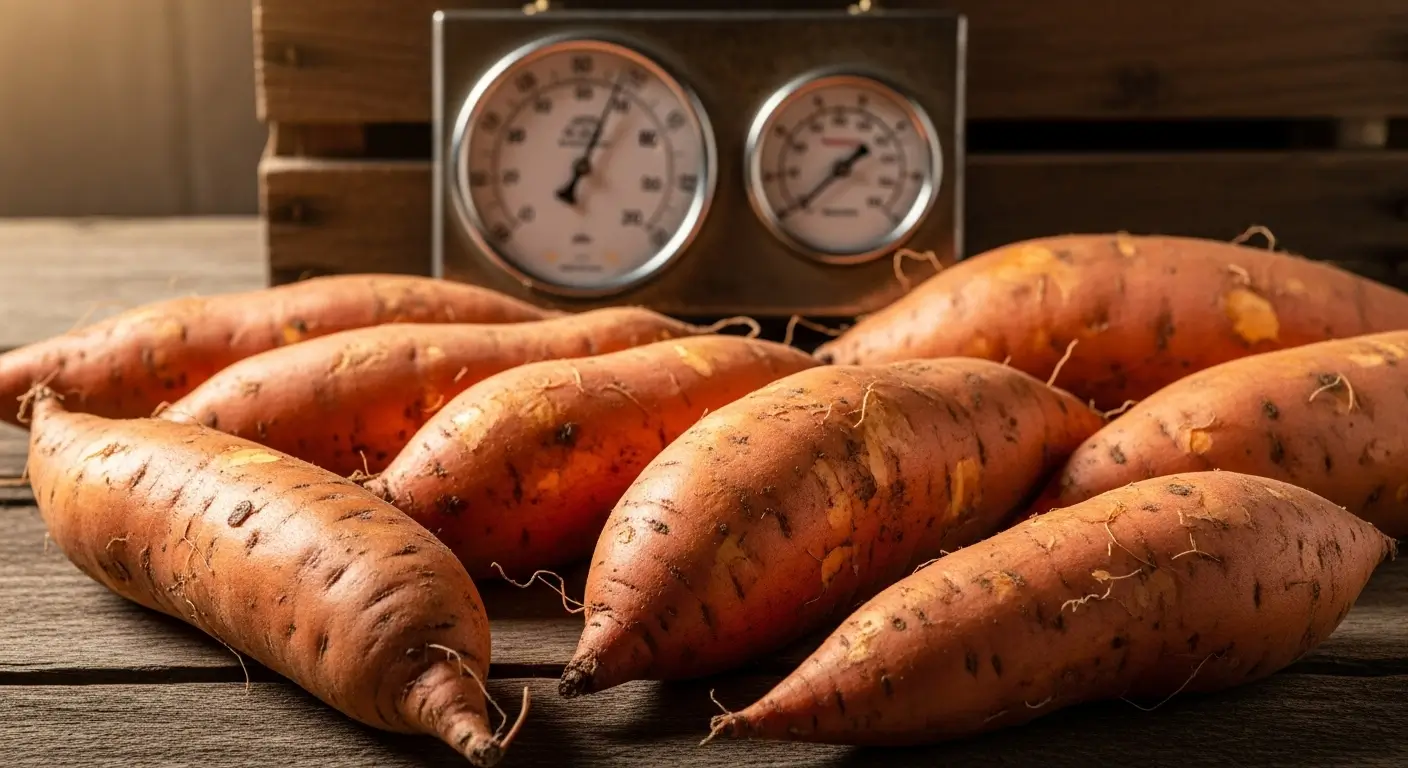Let me tell you about when I thought I was hot stuff with my tomatoes. Picture this: I’m standing in my garden, coffee in hand, ready to admire my gorgeous Cherokee Purples. Instead, I find them covered in these nasty black spots that look like someone has taken a Sharpie to my poor plants. I literally stood there muttering “What the heck?” for a good five minutes.
Here’s the thing—after growing tomatoes for fifteen years, I STILL get surprised by new problems every season. It’s like these plants have a secret meeting every winter planning new ways to stress us out, I swear! But you know what? That’s also what makes gardening so darn interesting.
If your tomatoes are looking rough right now, don’t panic. Seriously, take a breath. I’ve probably made every tomato mistake known to humankind, and most of my plants have lived to tell the tale. Plus, I’m gonna share all my hard-won wisdom with you so you don’t have to learn everything the hard way like I did.
Table of Contents
Key Takeaways: What You’ll Learn
- How to catch tomato problems before they turn into total disasters
- My go-to fixes for pests and diseases (the stuff that actually works, not just sounds good)
- Super simple tricks to prevent most problems from happening in the first place
- When to throw in the towel vs. when to keep fighting for your plants
- My tried-and-true “plant CPR” methods for stressed tomatoes
The Most Common Tomato Plant Problems (And How to Spot Them)
Blight: The Tomato Killer You Need to Know
Okay, let’s talk about blight—the absolute worst tomato plant problem you can face. I’m not trying to scare you, but this stuff is seriously no joke. It’s like the horror movie villain of the garden world.
There are two main types, and both can turn your beautiful tomato patch into a graveyard faster than you can say “fresh salsa.”
Early blight shows up as these dark, circular spots on the bottom leaves that look like tiny bullseyes. The first time I saw it, I thought my sprinkler was splashing dirt on the leaves. Nope! Those little bullseyes spread like crazy, and before I knew it, half my determinate plants looked like they’d been through a war.
Late blight is even scarier—we’re talking Irish Potato Famine scary. This stuff can literally appear overnight. I’m not kidding! I’ve gone to bed with perfectly healthy plants and woken up to find dark, water-soaked spots everywhere. It’s like plant zombies or something.
The secret to beating blight? Don’t let it get started in the first place. Space your plants out so air can move around (I know, you want to cram more plants in there—we all do). Water at the roots, not on the leaves. Seriously, consider getting some disease-resistant tomato varieties because some plants are naturally more challenging than others.
Hornworms: The Sneaky Green Giants
Oh man, hornworms. These things are like the ninjas of the garden—you won’t see them coming, but they’ll demolish your plants faster than a teenager cleaning out your fridge.
The first time I found one, I actually jumped and may have let out a small shriek. These caterpillars are HUGE—like, thumb-sized—and they’re perfectly camouflaged. They’re invisible until you notice your plant has been stripped bare overnight.
Here’s my foolproof hornworm hunting method: grab a flashlight and go out in the evening. Look for their poop (yeah, I said it) on the ground—it’s like little green pellets. Then look up and start searching for those fat green bodies. Hand-picking is still the best way to deal with them, though I’ll admit I used tongs for the first few years because, ew.
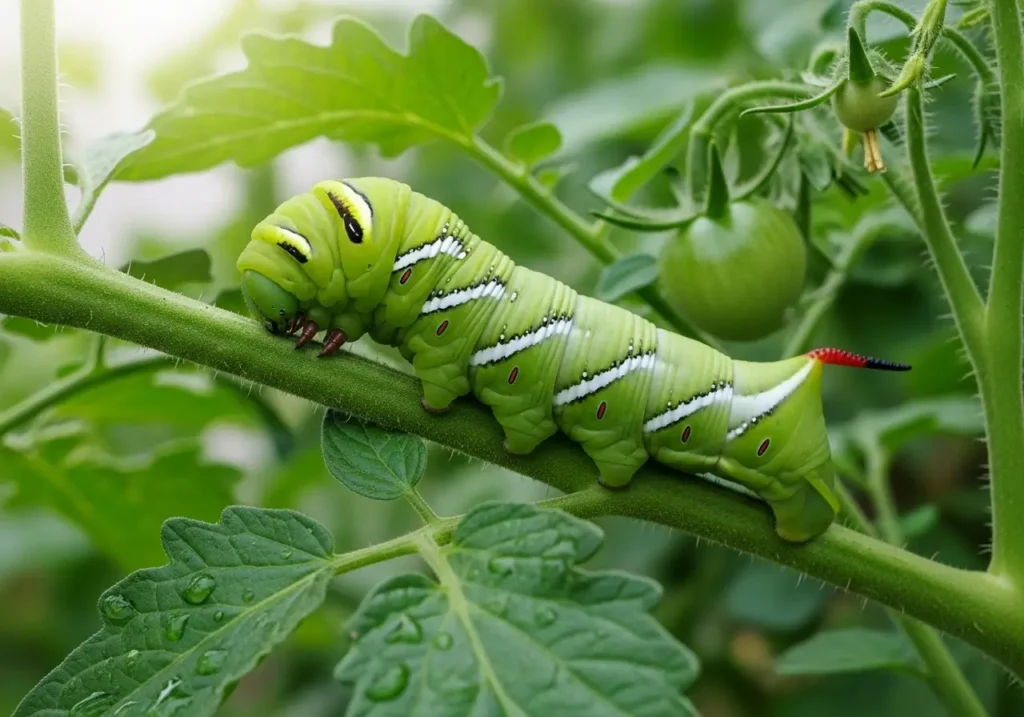
Pro tip from my neighbor, Mrs. Peterson (who’s been gardening since before I was born): if you find a hornworm covered in tiny white cocoons, leave it alone! Those are beneficial wasp babies that’ll help control future hornworm invasions. Nature’s pretty cool when you think about it.
Cracking and Splitting: When Good Tomatoes Go Bad
Nothing breaks your heart quite like walking out to find your almost-ripe tomatoes split wide open like someone took a knife to them. For years, I thought this was bad luck or maybe my plants were just dramatic. It turns out that it’s almost always about water, specifically, inconsistent watering.
Here’s what happens: your plants get thirsty, so they’re all stressed out. Then you water them (or it rains), and they’re like “WATER! GLORIOUS WATER!” and they suck it up so fast the fruit swells quicker than the skin can stretch. Pop! Split a tomato.
I fixed this by getting a simple drip irrigation system (best investment ever) and piling mulch around my plants like it’s going out of style. Consistent moisture is the key—no feast or famine watering schedules allowed.
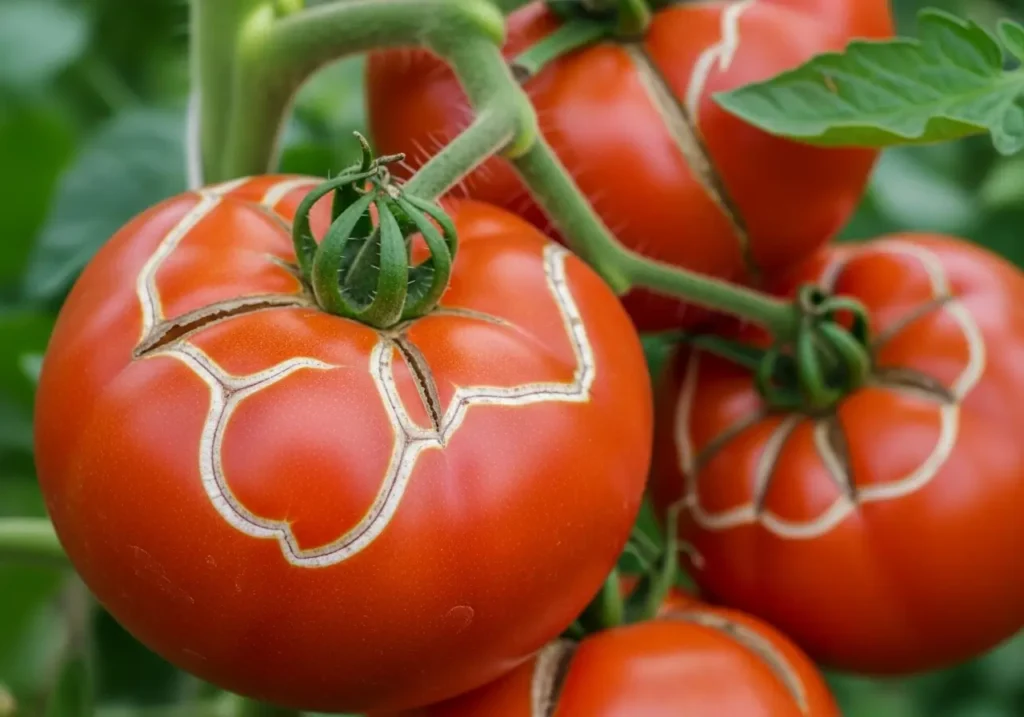
The University of Minnesota Extension provides detailed research on growth cracks and other tomato disorders that can help you identify exactly what’s causing fruit problems in your garden.
Yellowing Leaves: Reading Your Plant’s Distress Signals
Yellow leaves on tomatoes can mean about a million different things, which is super helpful. (That’s sarcasm, by the way.) The trick is figuring out which type of yellowing you’re dealing with.
First, don’t freak out if the bottom leaves turn yellow and drop off—that’s normal as plants age. It’s like how we get gray hair, except for plants.
But if yellowing is happening all over the plant, you might be dealing with:
- Overwatering: Your plant’s roots are basically drowning in soggy soil
- Hungry plants: Usually, they need nitrogen, but sometimes it’s magnesium
- Disease: Various nasty fungi love to start with yellowing leaves
- General stress: Could be transplant shock, weather extremes, or just plant drama
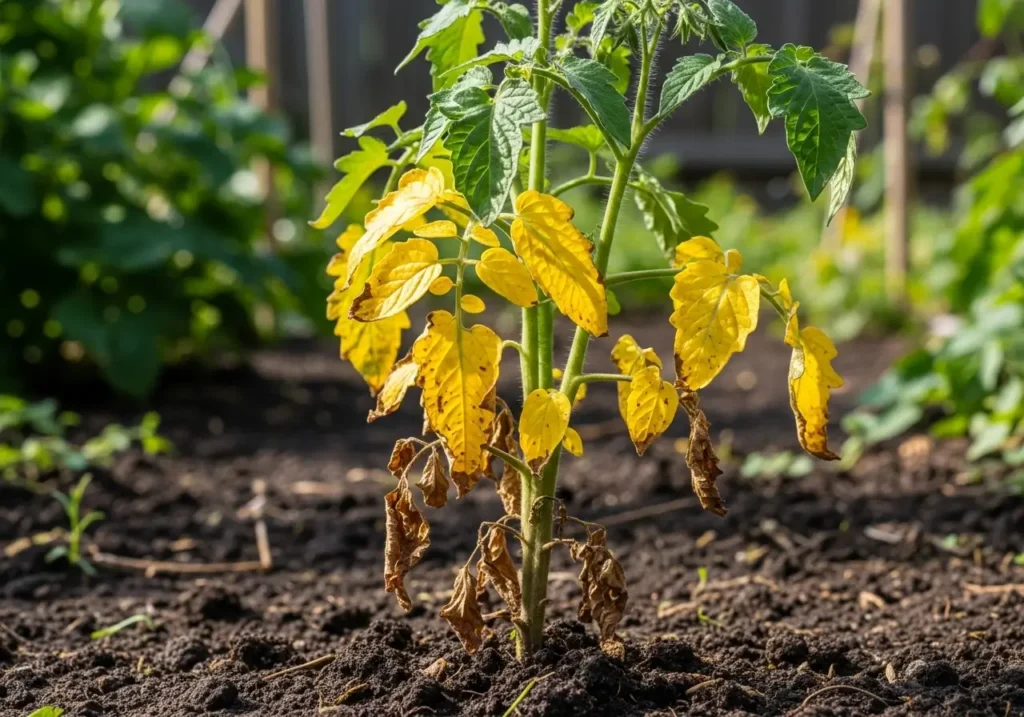
I keep notes in my phone about this stuff because what looks like one problem might be something else. Last year, I was convinced I had nutrient issues when it turned out I was watering way too much. Oops!
Not Sure Which Problem You’re Dealing With? Let Me Help!
Okay, I know that was a lot of information about different tomato plant problems! If you’re standing in your garden right now thinking “Grace, my plant has some of these symptoms but I’m still not sure what’s wrong,” don’t worry – I’ve got you covered.
I created this quick diagnostic tool because honestly, even after all these years, sometimes I need to work through the symptoms step by step. It’s like having a gardening buddy walk through your garden with you, asking the right questions to narrow things down.
🍅 Tomato Problem Diagnostic Tool
Answer a few quick questions to identify what’s wrong with your tomato plants
Where do you see the main problem on your tomato plant?
What do the leaf problems look like?
What’s happening to your tomatoes?
How does the whole plant look?
What kind of pests do you see?
🎯 Likely Problem: Early Blight
Those bullseye-pattern spots are classic early blight symptoms – one of the most common tomato plant problems.
Grace’s Quick Fixes:
- Remove affected leaves immediately
- Improve air circulation around plants
- Water at soil level, not on leaves
- Apply organic fungicide if spreading
- Mulch to prevent soil splash
💛 Likely Problem: Nutrient Deficiency or Overwatering
Yellow leaves can mean several things, but it’s usually about water or food.
Grace’s Quick Fixes:
- Check soil moisture – is it soggy?
- If dry, water consistently
- If wet, improve drainage
- Apply balanced fertilizer
- Bottom yellowing is normal aging
💔 Likely Problem: Growth Cracks from Inconsistent Watering
Your tomatoes are swelling too fast from irregular watering – classic tomato plant problems!
Grace’s Quick Fixes:
- Set up consistent watering schedule
- Add thick mulch around plants
- Consider drip irrigation
- Harvest cracked fruit immediately
- Choose crack-resistant varieties next year
🐛 Likely Problem: Tomato Hornworms
Those sneaky green giants can strip a plant overnight! Don’t worry, they’re manageable.
Grace’s Quick Fixes:
- Hand-pick them off (use tongs if squeamish)
- Look for their droppings to find them
- Apply Bt spray for organic control
- Check plants daily during peak season
- Leave any with white cocoons (beneficial wasps)
🖤 Likely Problem: Blossom End Rot
Those black bottoms are from calcium uptake issues, usually caused by inconsistent watering.
Grace’s Quick Fixes:
- Maintain consistent soil moisture
- Add mulch to retain moisture
- Avoid root damage when cultivating
- Don’t over-fertilize with nitrogen
- Remove affected fruit immediately
🤔 Need More Information
Your symptoms need a closer look. Check the full article above for detailed identification help!
Next Steps:
- Take clear photos of the problem
- Note when symptoms started
- Check your watering schedule
- Look for patterns (all plants or just some?)
- Consider recent weather changes
Got your answer? Great! Now let’s talk about how to actually fix these problems.
Effective Tomato Pest Control Strategies
Creating a Balanced Ecosystem
Here’s something that took me way too long to figure out: the best pest control isn’t about killing every single bug in sight. It’s about creating a balance where the good bugs keep the nasty bugs in check.
I plant marigolds, basil, and nasturtiums around my tomato beds, and not just because they’re pretty (though they are). These plants attract the good guys—ladybugs, lacewings, and tiny predatory mites that’ll munch on the pests for you.
When I spot a ladybug on my plants, I do a little happy dance. It means my mini ecosystem is working!
Organic Control Methods That Actually Work
When things get out of hand, I do reach for organic controls, but only the ones that won’t nuke my beneficial insects:
Bt spray is fantastic for caterpillars like hornworms. It only affects butterfly and moth larvae, so it leaves the good bugs alone. Just don’t use it when you see butterflies around because their babies are caterpillars too.
Neem oil works great for aphids and whiteflies, though heads up—it smells pretty funky. Apply it in the evening so you don’t accidentally harm any pollinators.
Insecticidal soap is my go-to for soft-bodied pests. I actually make my own with liquid castile soap and water. Super cheap and way gentler than the store-bought stuff.
Physical Barriers and Companion Planting
Sometimes the simplest fixes are the best ones. Row covers are like little plant sweaters—they protect young plants from nasties. Remember to remove them once flowers appear, or your pollinators can’t do their job.
I’m a huge fan of companion planting. Basil near tomatoes supposedly keeps some pests away (and definitely makes the tomatoes taste better). I plant chives around my tomato beds too—they seem to help with aphids, plus fresh chives for dinner!
Tomato Disease Prevention: Your First Line of Defense
Site Selection and Soil Preparation
Prevention starts way before you even think about planting. I learned this the expensive way after losing an entire season’s crop to soil diseases. Now I’m absolutely religious about crop rotation—tomatoes and their cousins (peppers, eggplants, potatoes) never run in the same spot two years in a row. Ever.
Good drainage is huge. If water sits in puddles after rain, you’re basically rolling out the welcome mat for every plant disease known to science. I’ve mixed compost and coarse sand into my heavy clay spots, and wow, what a difference!
Watering Techniques That Prevent Problems
How you water matters just as much as how much you water. Switching to drip irrigation five years ago was probably the smartest thing I’ve done for my vegetable garden.
Sprinklers and overhead watering are basically disease delivery systems. Wet leaves + warm weather = fungal disease paradise. It’s like creating a spa day for all the nasty stuff you don’t want.
If you don’t have drip irrigation (yet), water at ground level with a watering wand or soaker hose. Do it in the morning so any splashes can dry before evening.
Air Circulation and Spacing
I used to jam my tomato plants together like sardines because I wanted maximum harvest from my tiny space. Rookie mistake! Poor air flow creates these humid little pockets where diseases throw parties.
Now I give my plants room to breathe—at least two feet apart for determinates and even more for the big indeterminates. I also prune like crazy, removing suckers and bottom branches that touch the ground. Yeah, it feels like you’re reducing your harvest, but healthy plants actually give you way more fruit than stressed ones.
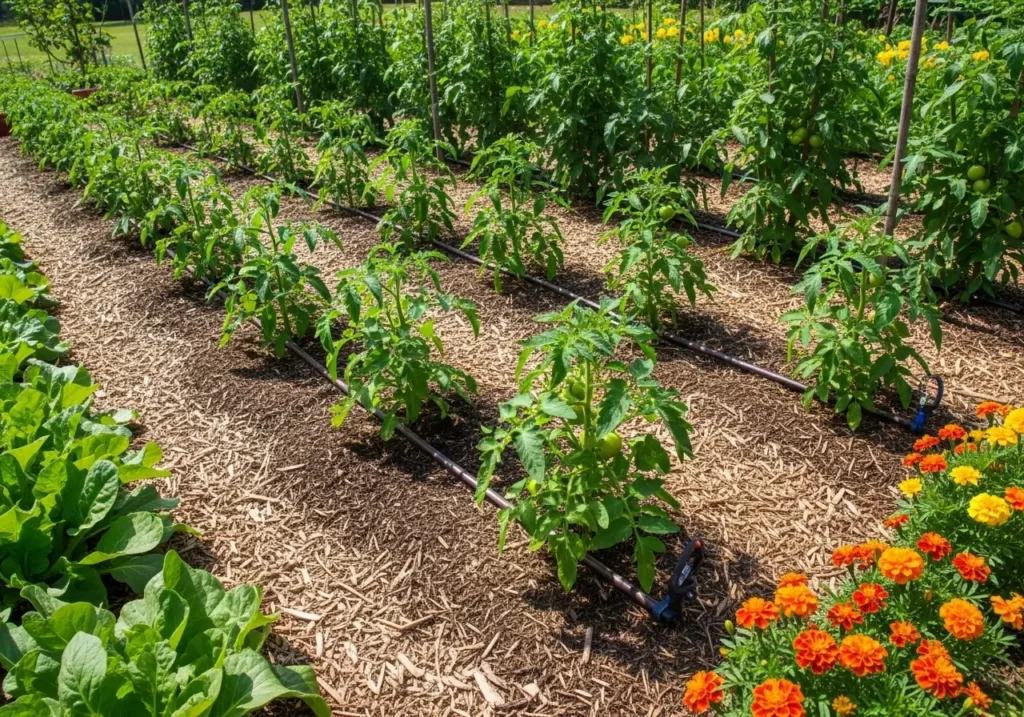
Common Tomato Plant Care Issues and Solutions
Nutrient Deficiencies: Reading the Signs
Tomatoes are basically teenage boys—they eat everything in sight and always want more food. When they’re not getting what they need, they’ll let you know with some pretty obvious signs.
Not enough nitrogen means your plants look pale and wimpy, with yellow leaves starting at the bottom. They basically look like they need a good meal.
Low phosphorus shows up as purple-tinged leaves, especially underneath. You’ll see this a lot in cool spring weather when plants also can’t absorb phosphorus.
Calcium issues cause blossom end rot—those gross black sunken spots on the bottom of your fruit. Here’s the tricky part: it’s often not actually about calcium in your soil, but about inconsistent watering that prevents plants from using the already there calcium.
If you want the full scoop on feeding your tomatoes properly, check out my detailed guide on fertilizing tomato plants. It’s got everything you need to keep your plants well-fed and happy.
Environmental Stress Factors
Temperature extremes can really mess with your tomatoes. When it stays above 85°F during the day or above 70°F at night, your plants basically go on strike and stop setting fruit. I’ve learned to throw some lightweight shade cloth over them during heat waves.
Cold snaps below 50°F will stop growth altogether. I keep old sheets handy for surprise late frosts, and I’ve finally learned not to rush planting just because the calendar says it’s spring.
Transplant Shock and Recovery
Even after all these years, I still occasionally shock my transplants. The signs are pretty obvious—wilting even when the soil’s moist, yellow leaves generally look miserable.
The key is patience (ugh, I know) and babying them while they recover. I harden off my seedlings gradually over about a week before planting, which helps a ton. If they get shocked, I give them some temporary shade and avoid fertilizing until they perk up.
Troubleshooting Guide: When Things Go Wrong
Emergency Triage for Severely Stressed Plants
Sometimes you’ll discover a situation that looks absolutely hopeless—plants covered in bugs, disease everywhere, or damage from weather. Don’t give up immediately! I’ve nursed plants back from conditions that looked like total disasters.
First, figure out what’s actually worth saving. Cut off anything that’s obviously dead or dying to stop problems from spreading. For pest invasions, start gentle rather than going nuclear with the strongest stuff you can find.
When to Fight and When to Give Up
This is probably the hardest lesson in gardening—sometimes you just gotta cut your losses. If a plant has severe blight, pulling it out protects everything else. It absolutely breaks your heart to yank up a plant you’ve been nurturing, but sometimes it’s the right call.
I’ll fight for plants with minor, localized problems or issues I caught early. But if something has a systemic disease, is completely overrun with pests, or is clearly struggling despite everything I throw at it? Sometimes, starting fresh is better for everyone involved.
Recovery Strategies That Work
For plants worth saving, recovery usually means fixing whatever caused the problem while giving the plant some extra TLC. Maybe that’s improving drainage, changing your watering routine, or providing protection from crazy weather.
Stressed plants often perk up with gentle, balanced fertilizer and consistent (but not excessive) watering. Just don’t go crazy with high-nitrogen fertilizer during recovery—it can actually make some problems worse by pushing weak, rapid growth.
Prevention: Your Best Strategy for Healthy Tomatoes
Building Long-Term Garden Health
The best tomato problems are the ones that never happen. Over the years, I’ve gotten way better at preventing issues instead of just reacting to them.
It all starts with healthy soil. I add compost every single year, test my soil pH when I remember to, and pay attention to how my plants respond to different things I try. Building good soil takes time, but man, seeing how much stronger your plants are is worth it.
Seasonal Maintenance Routines
I’ve got these little routines that help me stay on top. Spring prep includes soil testing and amendments, summer means regular scouting and maintenance, and fall is all about cleaning up debris that could harbor diseases over winter.
Having routines means I’m way more likely to catch problems when they’re still small and manageable. Plus, it’s satisfying knowing you’re doing everything possible to help your plants succeed.
Growing Forward: Your Tomato Success Story Starts Here
I’ve been at this for fifteen years, and I still run into new problems every season. The difference is I don’t panic anymore when weird stuff happens—I investigate, deal with it appropriately, and learn something new for next time.
Most tomato plant problems are totally fixable once you know what you’re dealing with. The secret is learning to really look at your plants, understanding what healthy looks like, and jumping on issues quickly when they pop up.
Remember, healthy plants can fight off most pests and diseases independently. Focus on the basics—good spacing, consistent water, healthy soil—and you’ll prevent way more problems than you’ll ever have to treat.
For everything you need to know about growing amazing tomatoes from seed to harvest, don’t miss my complete how-to grow tomatoes guide. It covers all the fundamentals you need for tomato success.
What’s going on with your tomato plants right now? Please drop a comment and let’s figure it out together! I love troubleshooting garden problems with fellow tomato lovers; your questions always give me ideas for new articles. We’re all in this crazy, incredible, sometimes frustrating tomato-growing adventure together!
Tomato Plant Problems: Common Questions and Solutions
What are the most common tomato plant problems?
The most common tomato plant problems include blight (dark spots with rings on leaves), hornworms (large green caterpillars), cracking fruit from inconsistent watering, yellowing leaves from overwatering or nutrient deficiency, and blossom end rot (black spots on fruit bottoms). Most problems stem from watering issues, diseases, or pests.
How do you fix yellowing leaves on tomato plants?
Yellow tomato leaves are usually caused by overwatering, underwatering, or nitrogen deficiency. Check soil moisture first – if soggy, improve drainage and reduce watering. If dry, establish consistent watering. For nutrient issues, apply balanced fertilizer. Bottom leaves naturally yellow as plants age, which is normal.
What causes tomatoes to crack and how do you prevent it?
Tomato cracking occurs when inconsistent watering causes fruit to swell faster than the skin can stretch. Prevent cracking by maintaining consistent soil moisture through drip irrigation or regular watering, adding thick mulch around plants, and choosing crack-resistant varieties. Remove cracked fruit immediately to prevent rot.
How do you identify and treat tomato blight?
Early blight appears as dark circular spots with concentric rings (bullseye pattern) on lower leaves. Late blight shows dark, water-soaked spots that spread rapidly. Treat by removing affected leaves immediately, improving air circulation, watering at soil level only, applying organic fungicide if needed, and choosing disease-resistant varieties.
